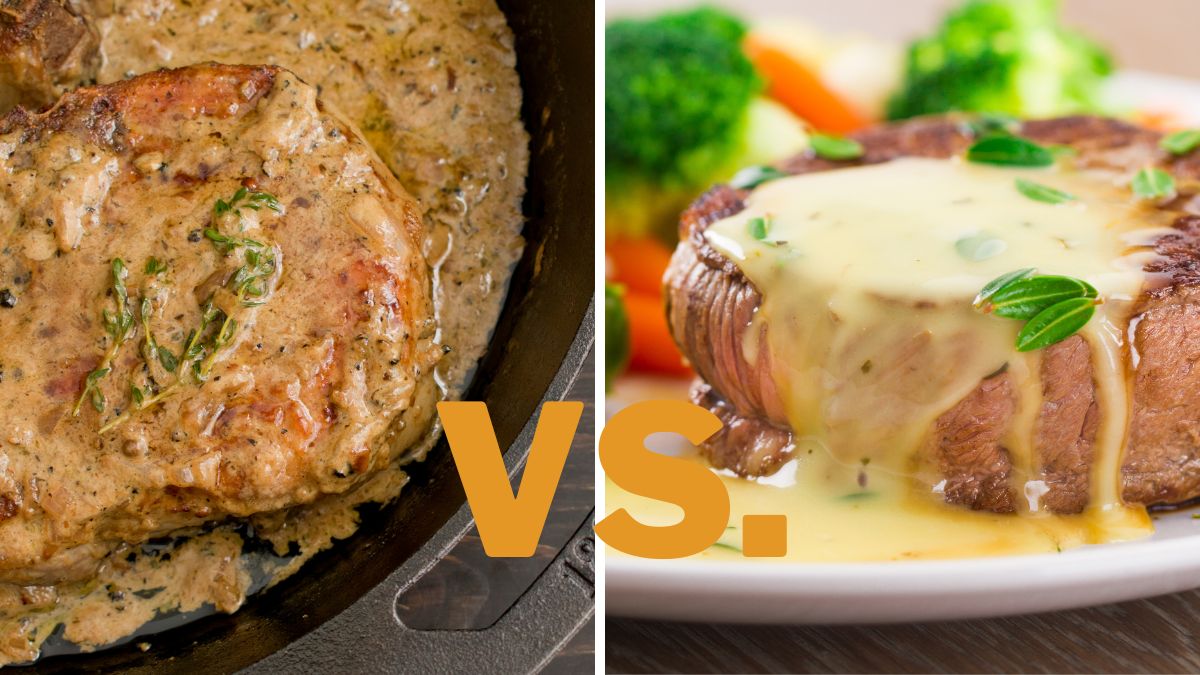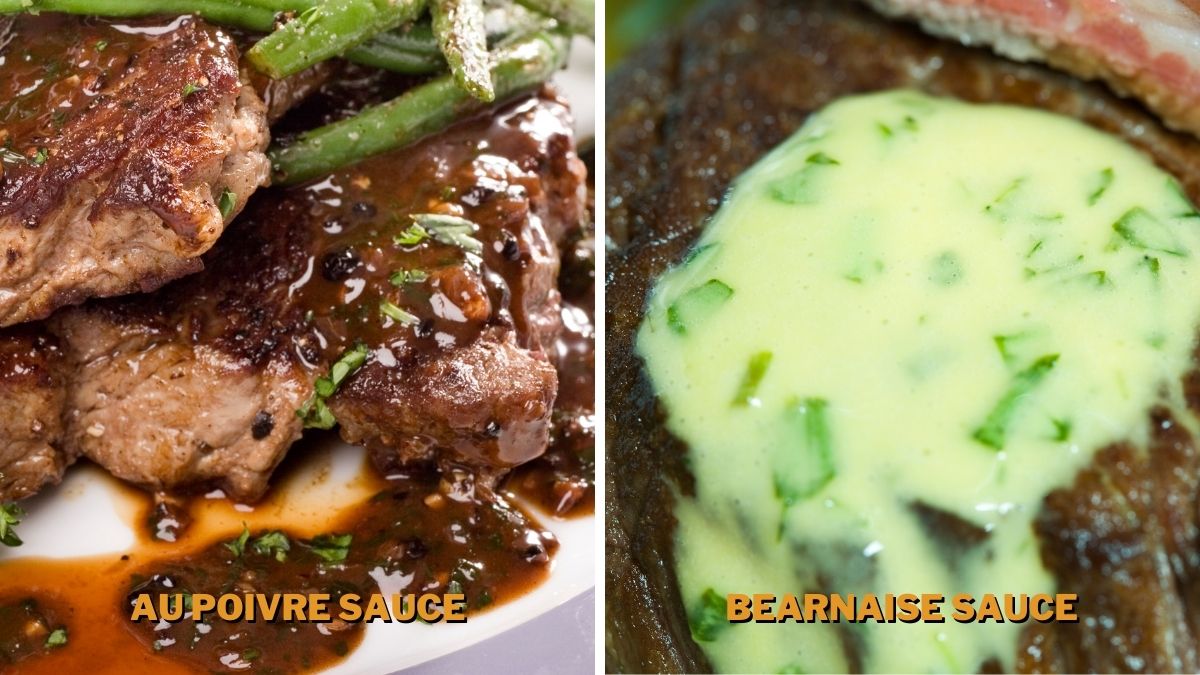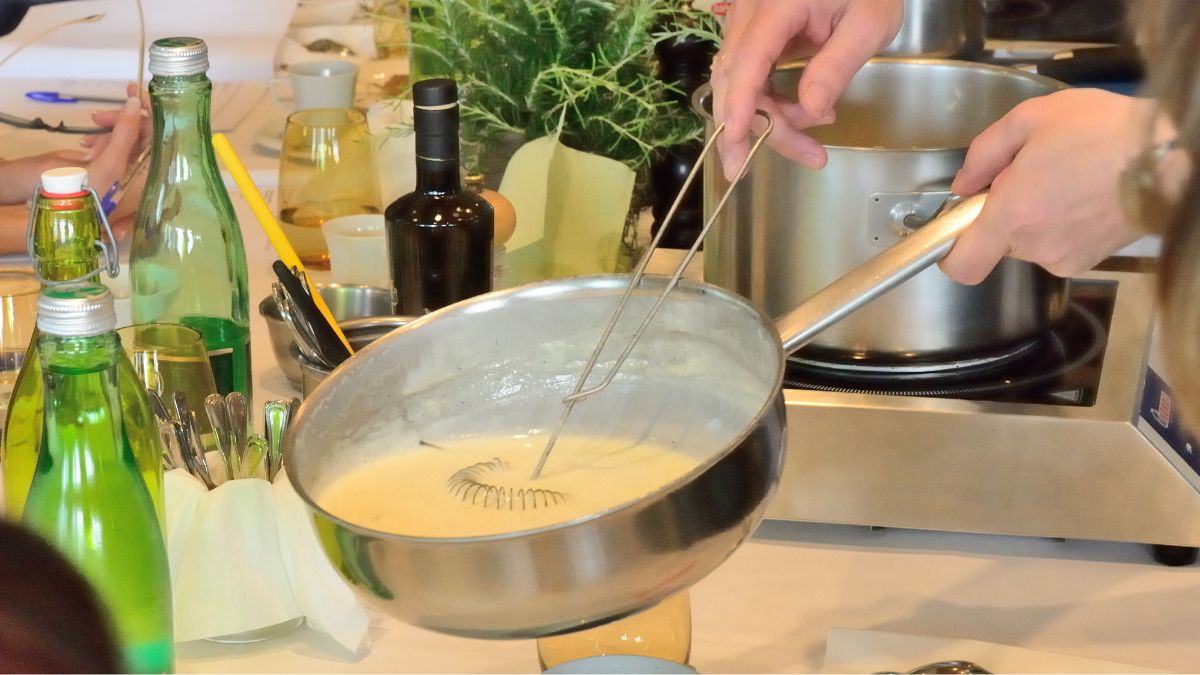Au Poivre vs. Béarnaise: Differences & Which Is Better?

Have you ever wondered which sauce is better to accompany your favorite steak, chicken, vegetables, or fish: au poivre or béarnaise? Lately, I’m into comparing all the sauces I didn’t know well enough, so I have really learned a lot about many of them. Since I wasn’t sure which of these two was better, I decided to taste-test both sauces to determine which one reigns supreme. So, what is the difference between au poivre and bearnaise sauce?
Both sauces have some ingredients that are the same, but still, the main ones that differ give them a distinct taste. However, béarnaise’s preparation is slightly complex. Both sauces are great, but while au poivre is better for steak, béarnaise is more suitable for chicken and fish.
All in all, a dish prepared with one of these two sauces has the potential to be delicious. Ultimately, though, it comes down to personal preference when deciding which sauce best suits the meal.
Differences
When it comes to deciding between au poivre and béarnaise sauces, it’s essential that you first understand the basics. So, you ought to know that both sauce recipes originated in France but with markedly different ingredients, which makes them have different tastes and usage. Let’s take a closer look at what those differences are.
Ingredients
Despite their differences in purpose, they have a few similarities in ingredients.
Both sauces contain butter, vinegar or white wine, shallots, and egg yolks. The base of au poivre sauce is also composed of brandy and mustard, whereas béarnaise sauce usually includes tarragon or chervil as well as lemon juice or white wine. But although both sauces may look similar when served at the table, the two can vary greatly in flavor and texture.
The key difference lies in the main ingredient: peppercorns for au poivre sauce and herbs for béarnaise sauce. The pepper gives the former its spiciness, while herbs give the latter its delicate-yet-flavorful taste.

Taste
Both of these sauces have a unique flavor profile and bring something special to the table.
While au poivre is quite pungent in flavor — think aromatic black pepper — béarnaise is more subtle and herbal thanks to its tarragon-driven profile.
Since au poivre is made with brandy or cognac, crushed pepper, and shallot butter, it has a creamy texture that pairs well with steak, although it can be used with other dishes as well. The brandy or cognac gives it a nice kick, and the pepper adds a subtle spice that won’t overpower the dish’s flavor.
Béarnaise sauce has a smooth texture that pairs nicely with chicken but can also work on fish and vegetables. The white wine vinegar gives the sauce a slight tanginess that complements the savory flavors beautifully.
Preparation
As with many sauces, the preparation of these two is quite different.
In terms of au poivre, you’ll need to use a lot of heat and pressure to bring out the flavors from the crushed pepper grains, butter, and cream. It’s a simple process that won’t take more than 10 minutes of your time.
I found the process extremely fun, actually — it’s particularly rewarding to start with simple ingredients and end up with a beautiful and delicious sauce!
On the other hand, béarnaise is more complex. You will need to ensure that all ingredients are emulsified together correctly and that the sauce has been cooked properly — the trickiest part is knowing when to add and remove heat since it mustn’t be overcooked or undercooked. If you don’t get this right, your sauce may turn out too thick or thin.

Which Is Better: Au Poivre, or Béarnaise?
When it comes to deciding which of these two sauces is the better one for a particular dish, it really depends on what kind of food you are eating.
Béarnaise is the way to go if you want a savory yet slightly sweet condiment. If you prefer the more intense flavor of pepper, au poivre will be more up your alley.
Au poivre is a classic steak sauce, with its peppery flavor giving a nice kick to any cut of beef. It’s also great for pork chops and other meats. Béarnaise, on the other hand, is best suited for fish and chicken dishes, as it has a richer flavor that pairs nicely with more delicate proteins.
Both of these sauces can also be used with vegetables — but here again, different flavors work better depending on what you’re serving.
If you’re going for something heartier and heavier, like potatoes or Brussels sprouts, au poivre will work better. For lighter vegetable dishes like steamed broccoli or grilled asparagus, go with béarnaise to bring out the sweetness of the vegetables.
Ultimately, it all comes down to your preference in taste and texture. Definitely go and experiment with both sauces to get a feel for which works best for your tastes.
